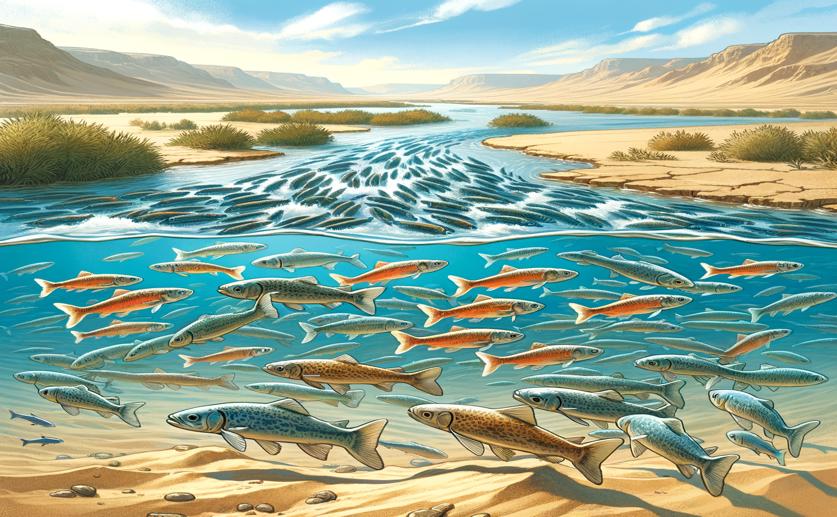
Nomadic Movement Patterns of Small Fish in a Fragmented Desert River
Greg Howard
3rd August, 2024

Image Source: Natural Science News, 2024
Key Findings
- The study focused on the movement patterns of the endangered Rio Grande silvery minnow (RGSM) in fragmented habitats of the Rio Grande in New Mexico
- RGSM exhibits a high degree of mobility, even in fragmented river systems, which is crucial for accessing resources necessary for survival
- The presence of dams and reduced river flow due to human activities and droughts complicates RGSM movement, reducing genetic diversity and habitat connectivity
References
Main Study
1) Movement patterns of a small-bodied minnow suggest nomadism in a fragmented, desert river
Published 31st July, 2024
https://doi.org/10.1186/s40462-024-00490-w
Related Studies
2) The movement ecology of fishes.
3) Paradigm versus paradox on the prairie: testing competing stream fish movement frameworks using an imperiled Great Plains minnow.
4) Persistence, spread and the drift paradox.
Journal: Theoretical population biology, Issue: Vol 67, Issue 1, Feb 2005
5) Genetic erosion in an endangered desert fish during a megadrought despite long-term supportive breeding.



 28th May, 2024 | Jim Crocker
28th May, 2024 | Jim Crocker